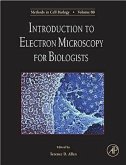ENGLISHNearly ninety and still in surprisingly good condition.Like no other research tool the electron microscope by the brothers Ernst and Helmut Ruska and their brother-in-law Bodo von Borries marks the dawn of modernity. Their avant-garde idea of 1931 to examine under a microscope with electrons has expanded human vision until today. The world's first commercial overmicroscope for discoveries in the world of the smallest followed in Berlin 1939. 1948 the German development and application of overmicroscopy was revived in Düsseldorf.As a key instrument of research it has completed a triumphant march and it has won the attention of the Nobel Prize Committee for awards twice. 1986 the Nobel Prize for Physics was awarded for the invention of the Berlin electron microscope. 2017 the Nobel Prize for Chemistry was awarded for the sharp electron-optical imaging of fragile biomolecules through the modern application of low temperature.This book traces the way of electron microscopy along with its inventors from Berlin to Düsseldorf.DEUTSCHBeinahe neunzig und immer noch erstaunlich gut in Form.Wie kein anderes Forschungsmittel markiert das Elektronenmikroskop der Gebrüder Ernst und Helmut Ruska und deren Schwager Bodo von Borries den Aufbruch in die Moderne. Ihre avantgardistische Idee von 1931 mit Elektronen zu mikroskopieren hat bis heute das menschliche Sehvermögen erweitert.In Berlin folgte 1939 das erste kommerzielle Übermikroskop der Welt für eine Entdeckungsreise in die Welt des Kleinsten. 1948 wurde die deutsche Fortentwicklung und Anwendung der Übermikroskopie in Düsseldorf wieder belebt.Es hat als Schlüsselinstrument der Forschung einen Siegeszug ohnegleichen absolviert, und es hat die Aufmerksamkeit des Nobelpreis-Komitees zweimal gewonnen. 1986 wurde der Nobelpreis für Physik für die Erfindung des Berliner Elektronenmikroskops vergeben. 2017 wurde der Nobelpreis für Chemie für die scharfe elektronenoptische Abbildung von fragilen Biomolekülen durch die moderne Anwendung von Tieftemperatur vergeben.Dieses Buch zeichnet in Geleit seiner Erfinder den Weg der Elektronenmikroskopie von Berlin nach Düsseldorf nach.








